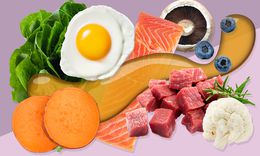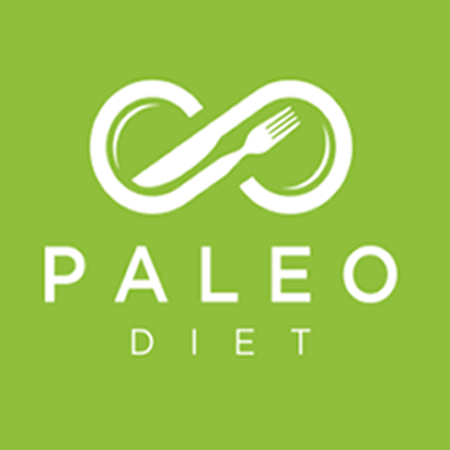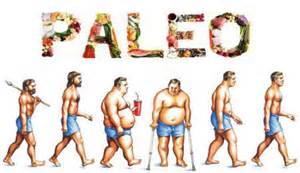
The Paleo Diet, which is low in carbs, is not right for everyone. Many nutrition and diet myths are still being perpetuated by doctors. There are many health benefits to this diet. Read on to learn more about the health benefits of the Paleo diet. Your individual health needs will determine whether or not this diet is right for you. Read this article before you decide to adopt a low-carb lifestyle. Below are some questions you might have.
Reduces inflammation
Paleo diet was created to fight inflammation. This conversation is often centered around specific nutrients or foods that could trigger inflammation. One nutrient that people tend to track is carbs, and a low-carb diet can be highly effective at reducing inflammation. What makes a low carb diet anti-inflammatory, you ask? These are some tips to help you reduce carb intake and reap the benefits of a low carb diet.
There isn't much research into the effectiveness of Paleo for Hashimoto’s. It is important to consult your doctor before you start any treatment. Research has shown that the diet is effective in managing chronic illnesses like Crohn's disease and ulcerative colitis. It is possible to treat Crohn's disease, ulcerative Colitis and rheumatoidarthitis with it. More research is needed.
Triglycerides

While the Paleo Diet has been promoted as a weight-loss program, its effects on triglycerides may not be as apparent as you might believe. Studies show that low-carb diets can raise cholesterol and increase triglycerides. However, other studies have shown that they improve heart health. Triglycerides (fat-based energy) are stored in fat cell cells and are fat-based.
Triglycerides, the main component of body fat, are formed by the conversion from calorie intake to the fatty acids. These are stored in fat cells and released when energy is needed. Excessive triglycerides, known as hypertriglyceridemia, can cause adverse effects on the cardiovascular system. A low-carb diet can help lower triglycerides.
In a study, people who ate a high-fat, low-carb diet had a significant reduction in triglycerides. Their total cholesterol levels fell by 13%. This low-carb diet was safe to eat for both overweight and obese individuals. The participants lost an average of 10 lbs and experienced no side effects. For 24 weeks, overweight adults went on a long-term ketogenic diet. Results showed lower triglycerides as well as a decrease in body weight and body mass index (BMI) and higher levels of blood glucose.
Blood pressure
Many Paleo advocates are worried about the possible negative effects of low-carb diets on blood pressure. The truth is that a healthy diet can lower blood pressure by lowering cortisol levels and replacing processed food with whole foods. In addition, a low-carb diet does not result in orthostatic hypertension, a condition that many people are concerned about. Here are some ways to lower blood pressure while on Paleo.

One study showed that low-carb eating is better for high blood pressure than conventional diets. Although this is not conclusive, it is worth mentioning that it has been shown to lower blood pressure without causing significant weight loss. Paleo can improve glucose tolerance, insulin secretion and lipid profiles. It can even increase cholesterol levels. Furthermore, moderate weight loss on the paleo diet can reduce the risk of high blood pressure and obesity, as well as improve glucose tolerance.
Weight
The paleo diet does not represent a new concept. Although it's been around for decades, the paleo diet gained popularity when athletes and Crossfitters began using it to fuel themselves. Many food companies offer paleo-friendly products today. But what exactly does it do? What are the benefits for your body? How can it help you lose weight? Learn more. This article will explore the benefits and drawbacks of a paleo diet.
Mixing carbs and fat triggers reward circuits within the brain. When carbs and fat are combined together, the insulin response is greater than normal, causing the body to store more fat. This combination makes it easy for people to gain weight. To help combat this problem, you should limit the intake of sugar, grains, and harmful vegetable oils on the paleo diet. Instead, eat more whole foods and less processed foods.
FAQ
Which method is best to learn how to cook?
Cooking is one of those things that everyone should know how to do. You will miss out on great meals if you don't learn how to cook. To learn how to cook, you must first find a recipe you like and then follow it carefully. You'll then want to practice small adjustments until you feel confident making the dish. Next, you can cook for others. This will not only help you cook better, but it will also test your skills.
How to be a Chef
There are many avenues to become a professional chef. Begin by enrolling at a community college. Next, consider attending culinary school. Finally, consider a paid internship.
What is the difference between a chef & a cook?
A chef prepares food to be served to others. A cook prepares food for himself or herself. While both jobs involve the preparation of food, a chef interacts directly with his customers. They may need to make decisions about what they will serve to their guests based upon their preferences. Cooks don't interact with customers. Instead, a cook makes sure the food tastes good before delivering it to customers.
How long does it take to become chef? What is the average career track?
Becoming a chef takes approximately five years. You will learn basic cooking techniques, and get experience as a chef assistant. After your training is complete, you will be eligible to apply for a job as a sous chef, executive chef, or line cook. The average salary for a chef ranges from $25,000 to $60,000 per year.
Statistics
- On average, chefs earn $58,740 a year, according to the BLS. - learnhowtobecome.org
- In the United States, the category is estimated at $23.2 billion annually and is growing faster than the market. (washingtonpost.com)
- The median pay for a chef or head cook is $53,380 per year or $25.66/hour, according to the U.S. Bureau of Labor Statistics (BLS). (learnhowtobecome.org)
External Links
How To
How to Be a Chef
One of the most exciting careers is that of a chef. It is difficult to know what job you would like, as it requires a lot in the way of knowledge and skills. There are many options for those who want to work immediately. You have the option to work in restaurants or hotels, as well as at catering companies. Or you can even learn how to cook. Here are some tips and tricks to help you decide what career path is best for you.
-
Learn how to cook! Everybody should learn to cook once in their lifetime. Learn how to cook even if you don’t know much about cooking. There are many recipes online that are simple to follow. When learning new things, the most important thing to remember is not to rush. Take it slow and enjoy each step.
-
Do you want to become an expert chef? By doing this, you can develop your own style and learn valuable knowledge. Culinary schools offer many courses, including baking, pastry, meat cutting, and more. Students are required to stay in class for several years before graduating. But if you really want to become a chef, you should think twice before choosing any school.
-
Work in a restaurant
Working in a restaurant is probably the easiest way to enter the world of chefs. Because they have the opportunity to gain practical experience, most people decide to become chefs. Restaurants are always looking for qualified staff, particularly those who have experience in other areas. So if you want to become a chef without formal education, you should look for restaurant jobs.